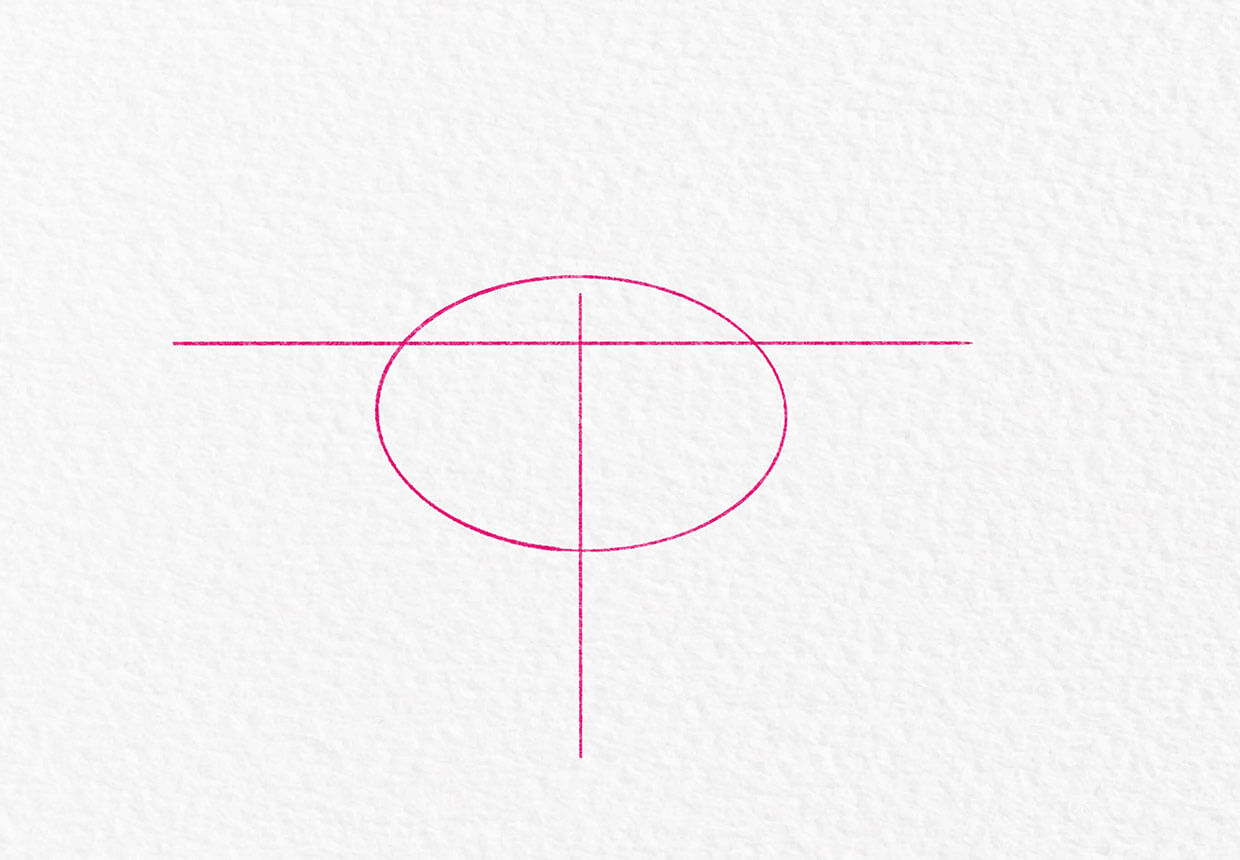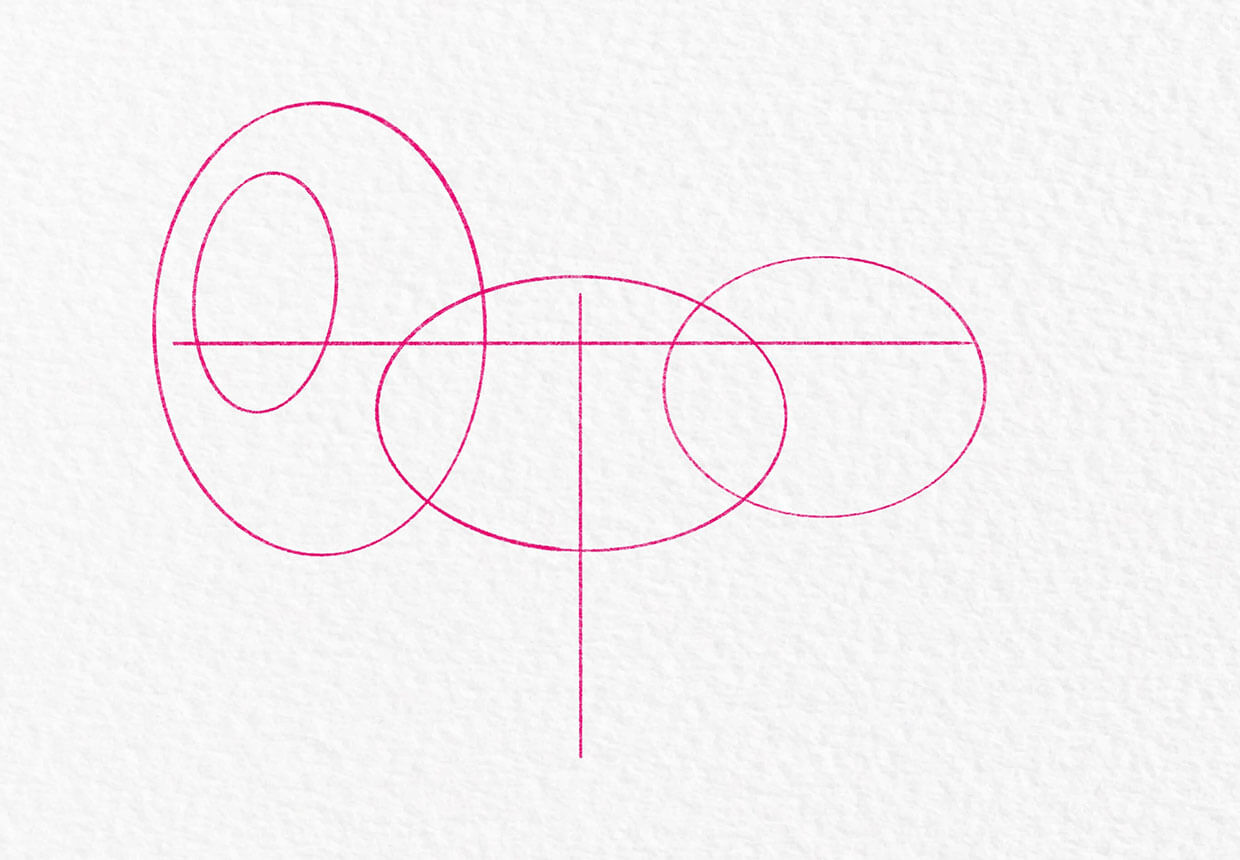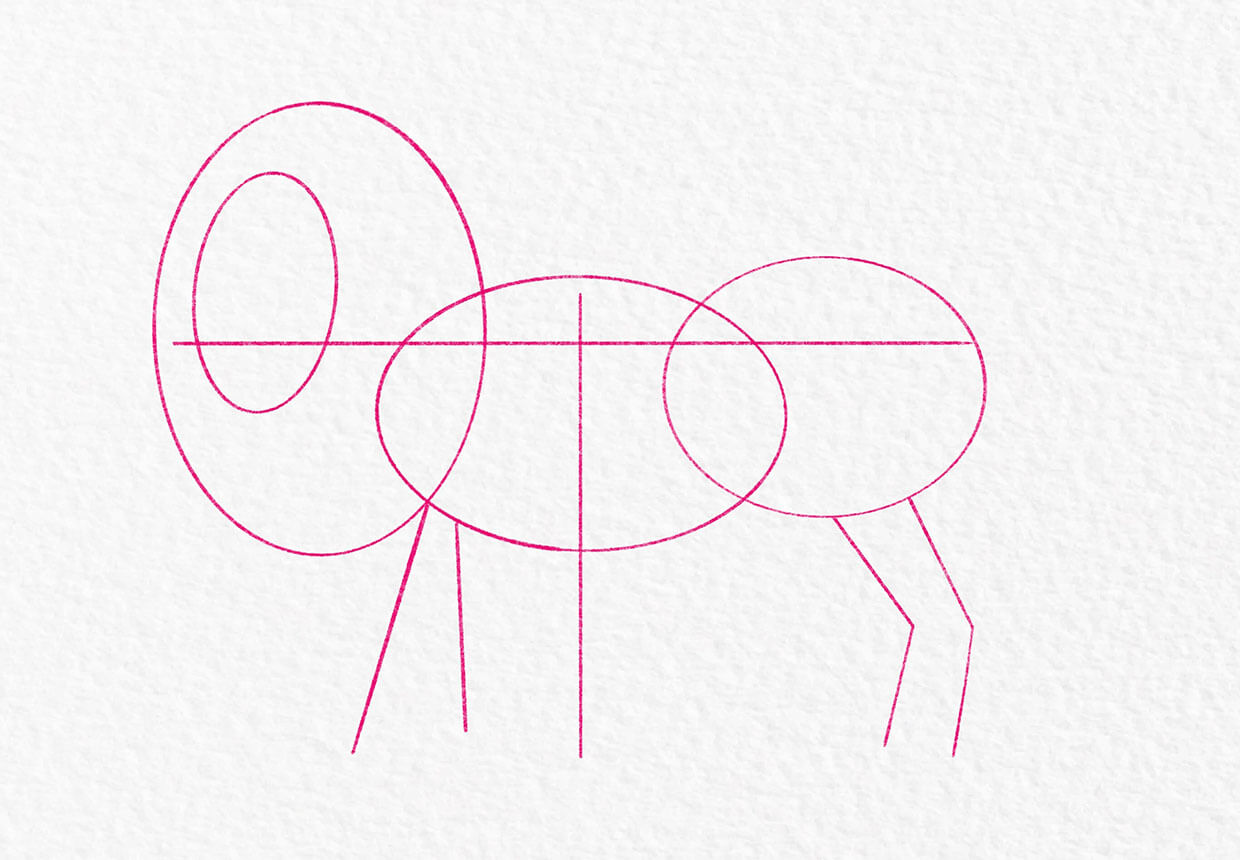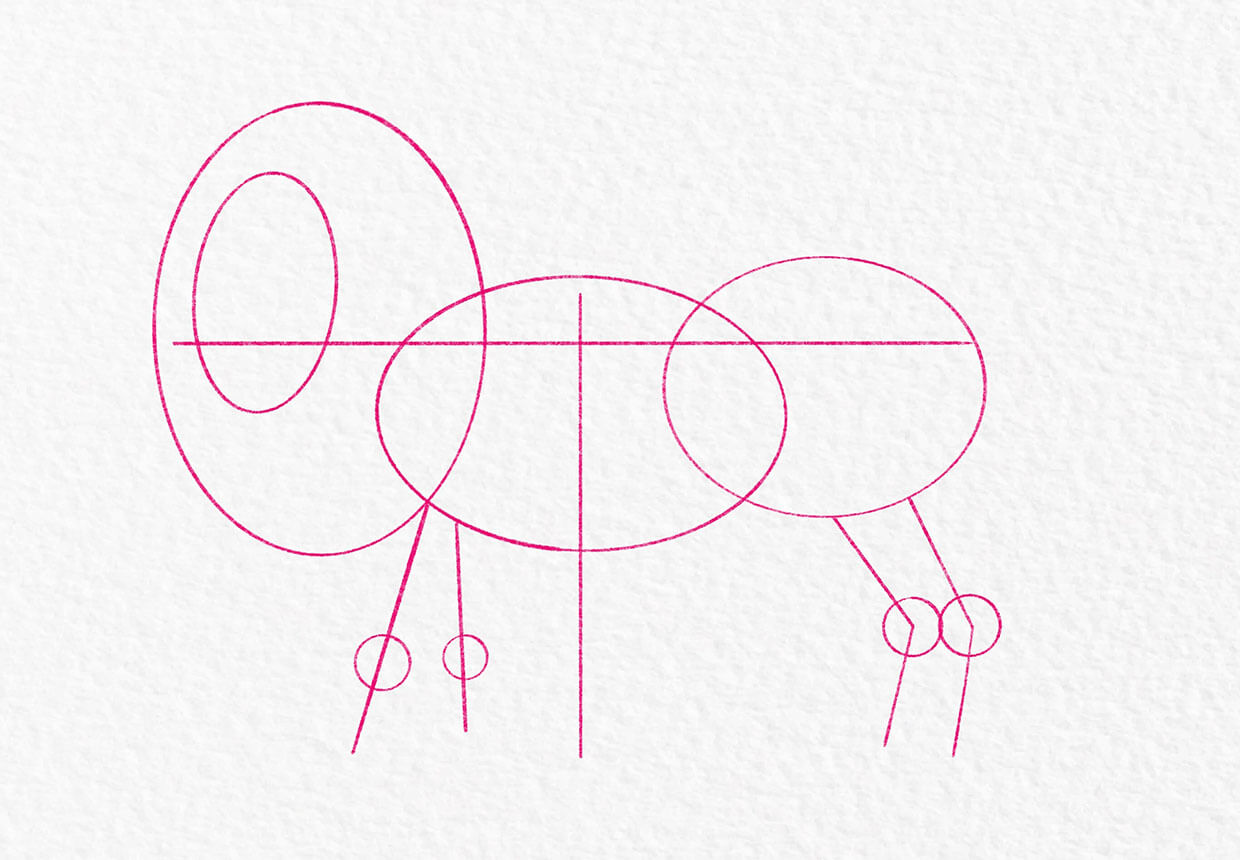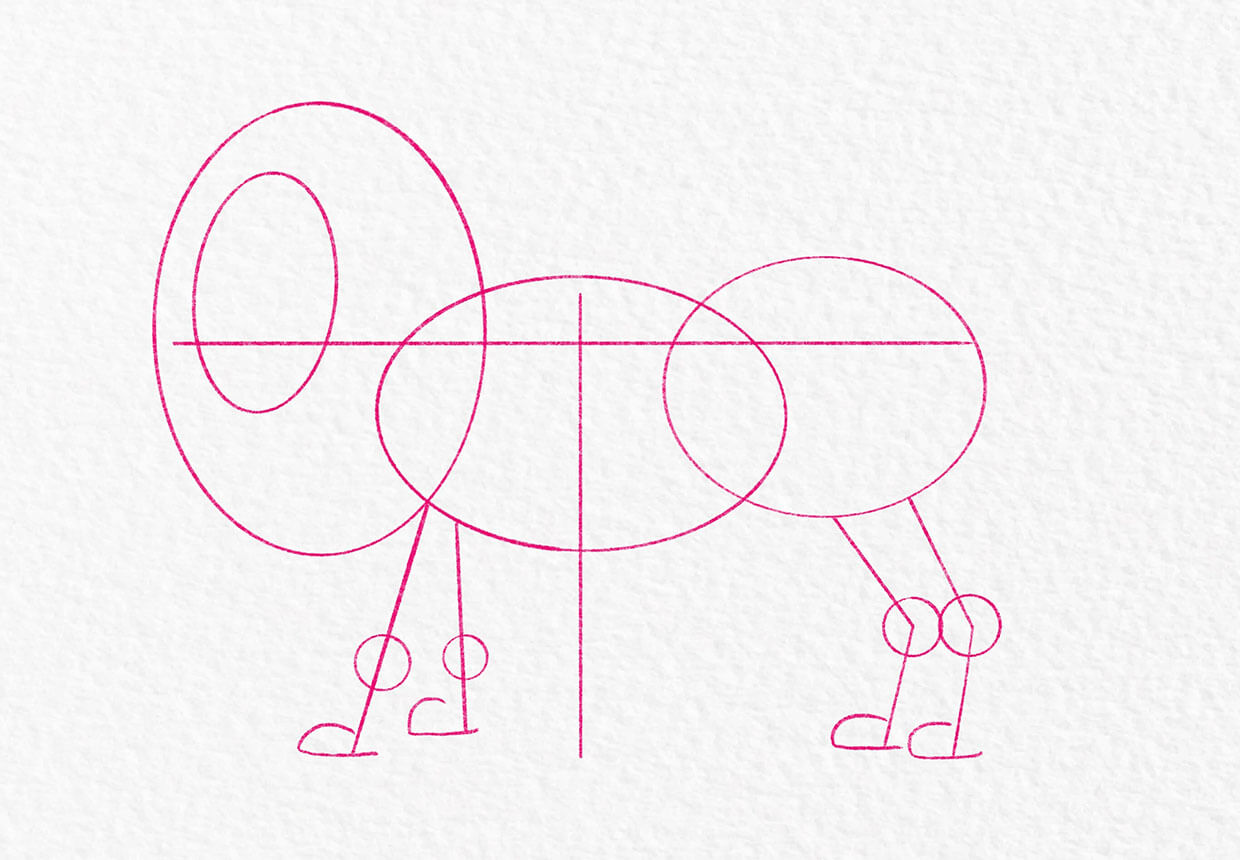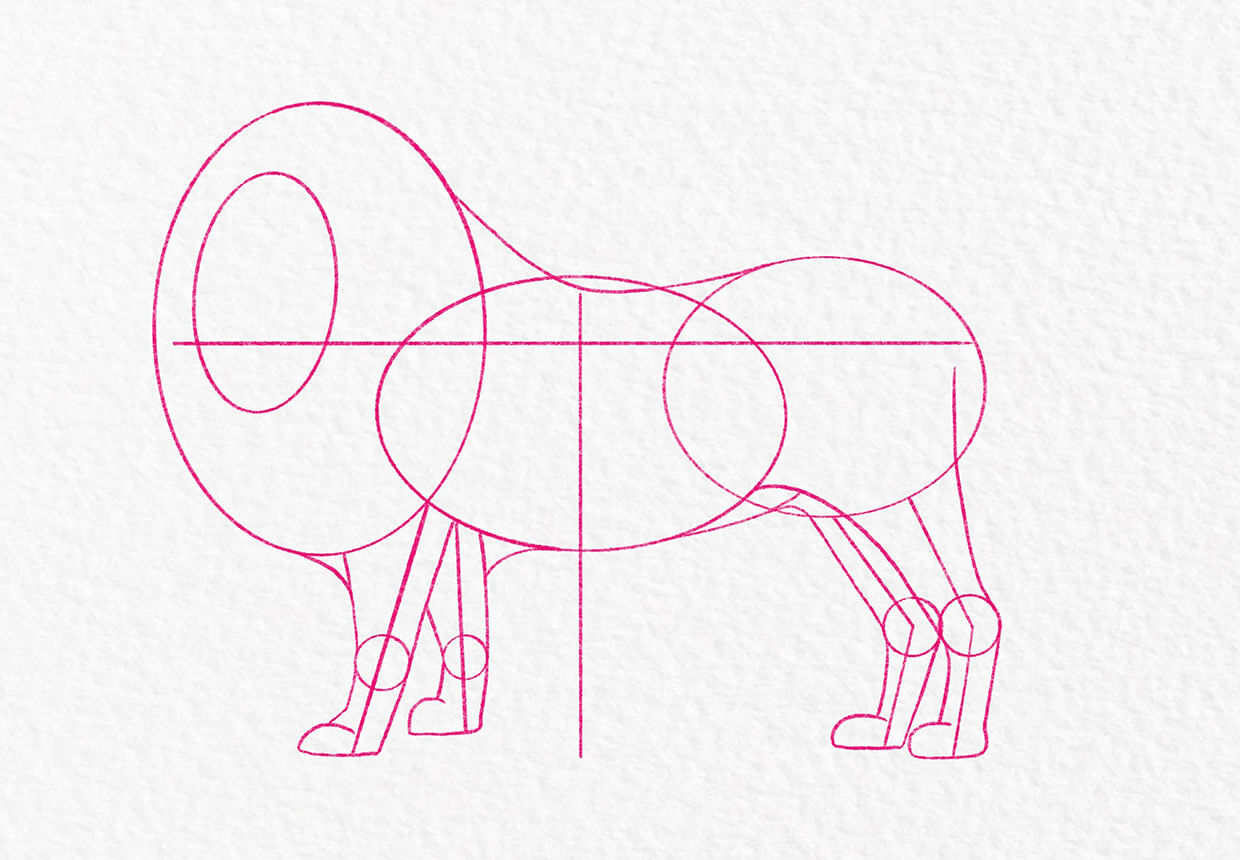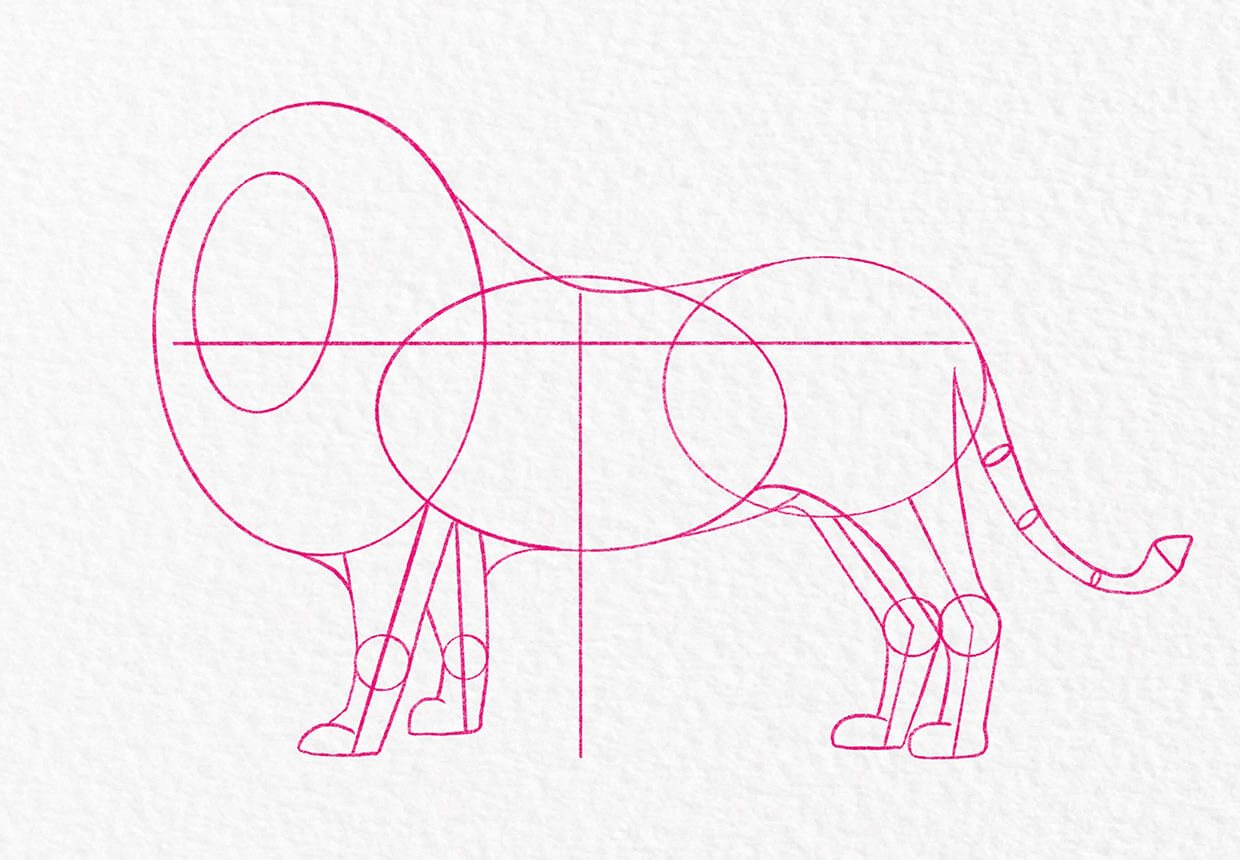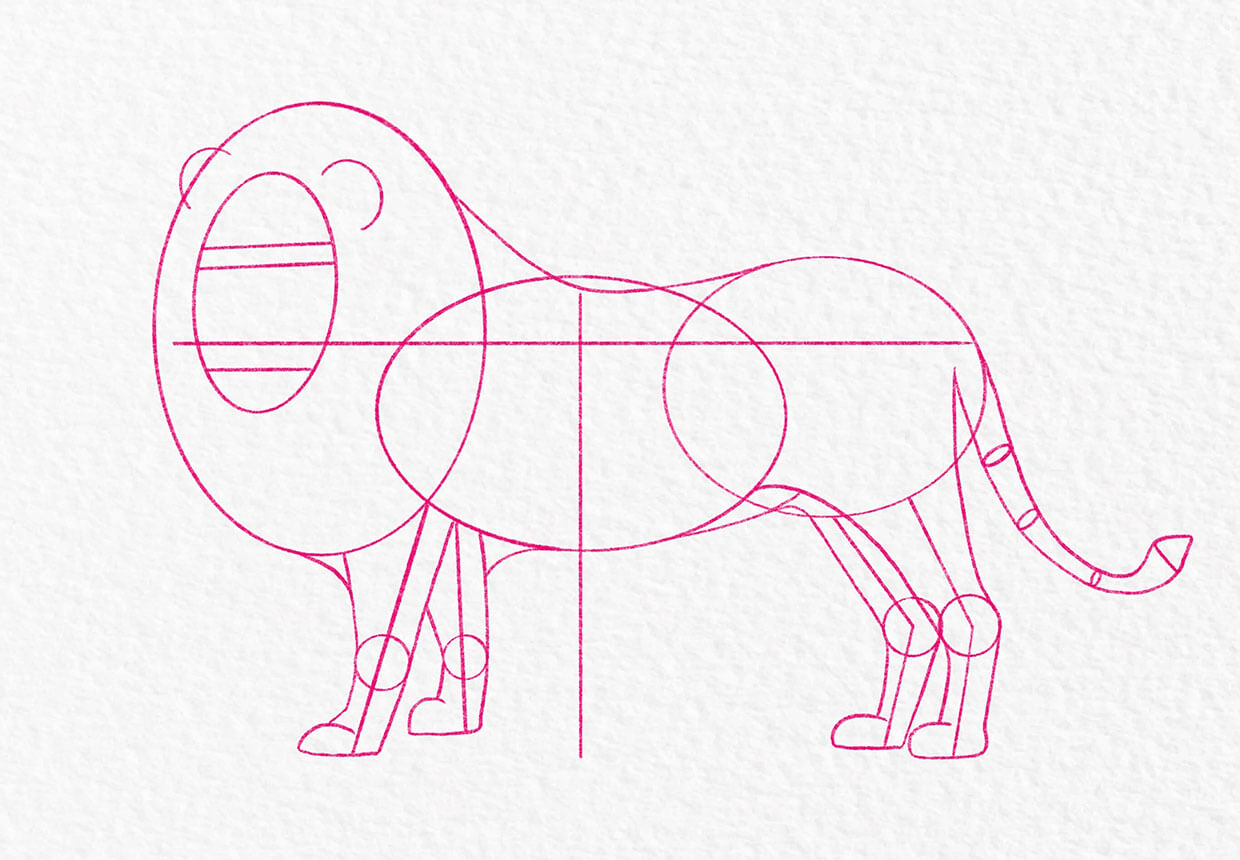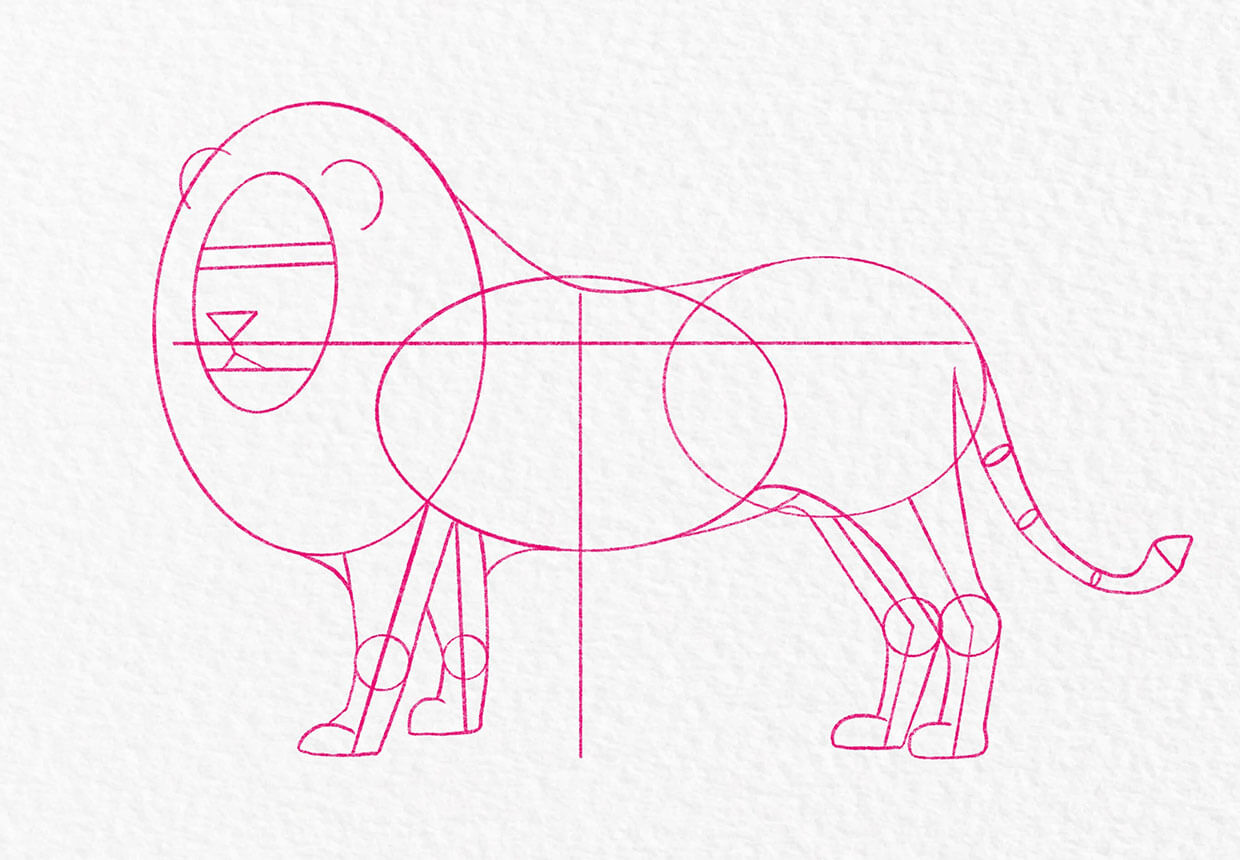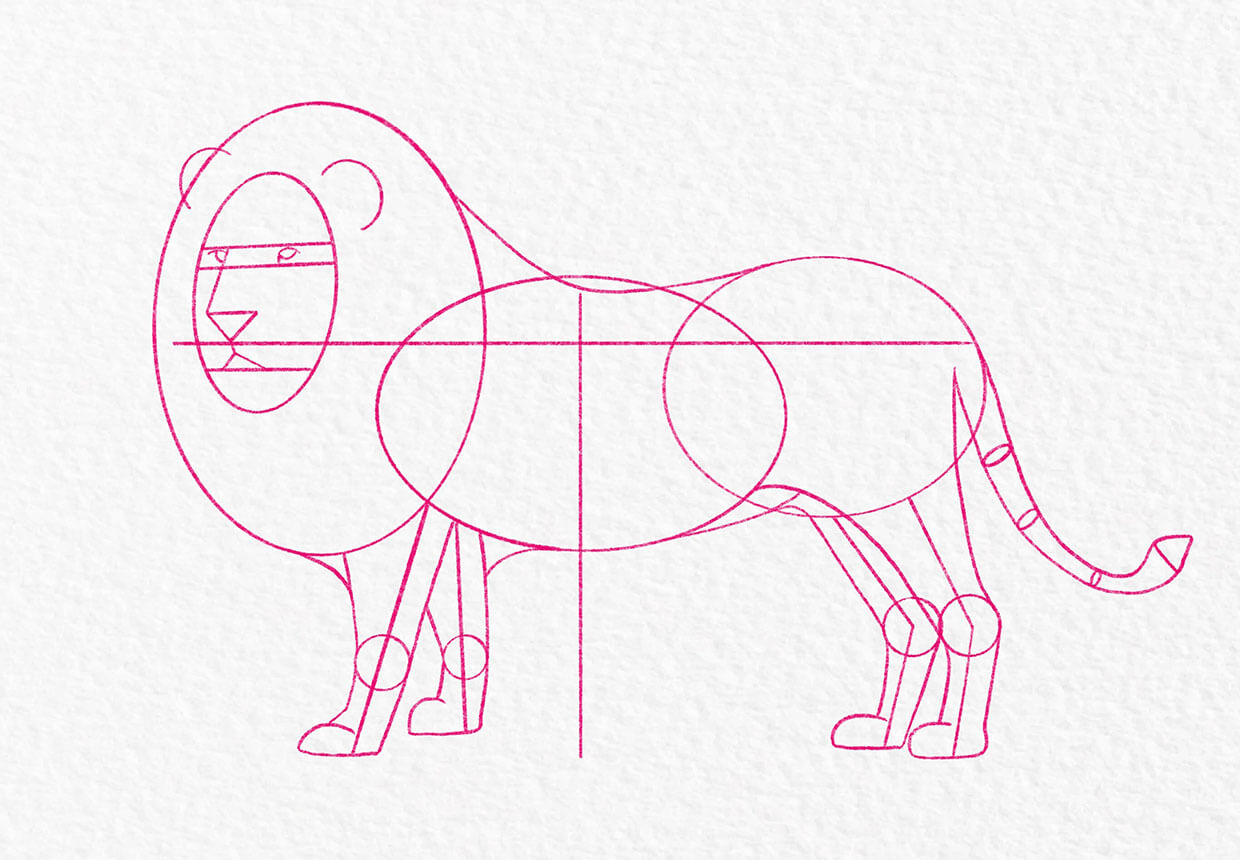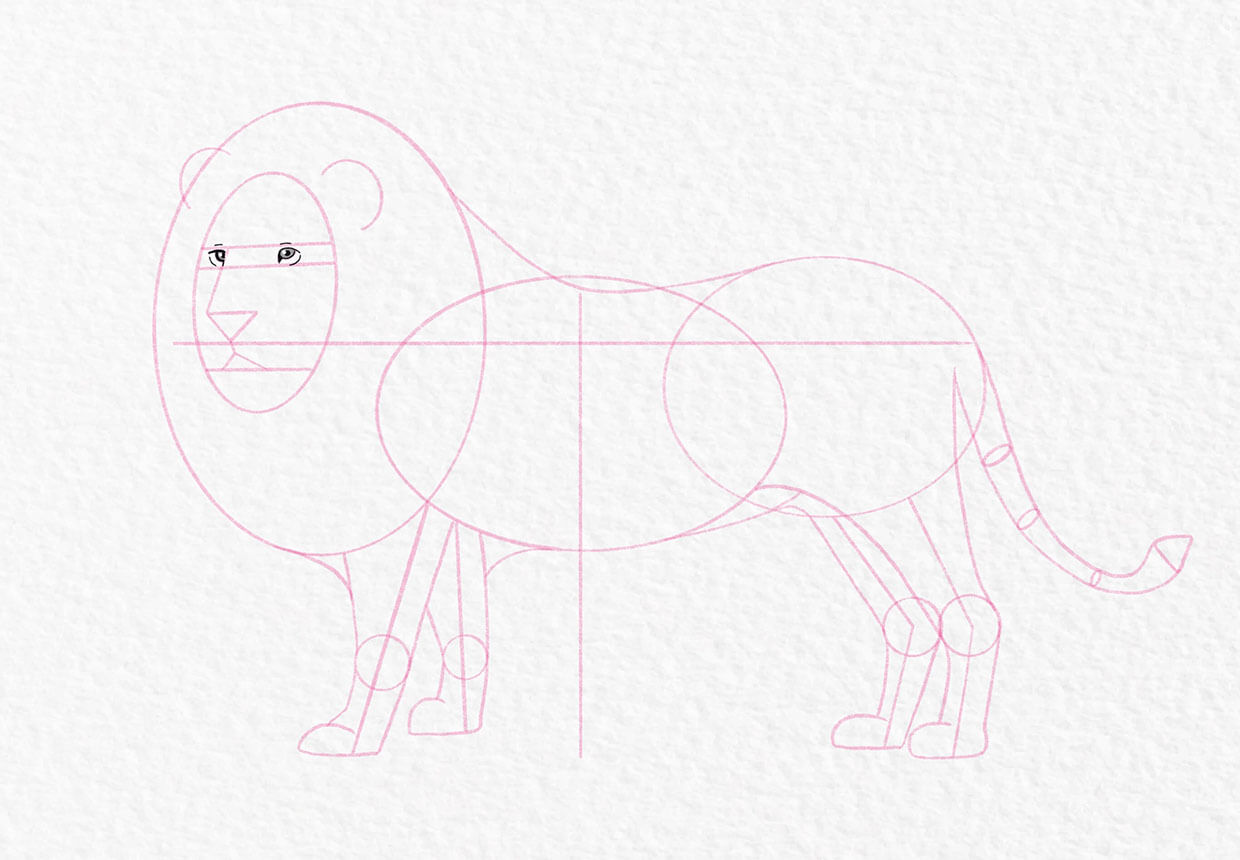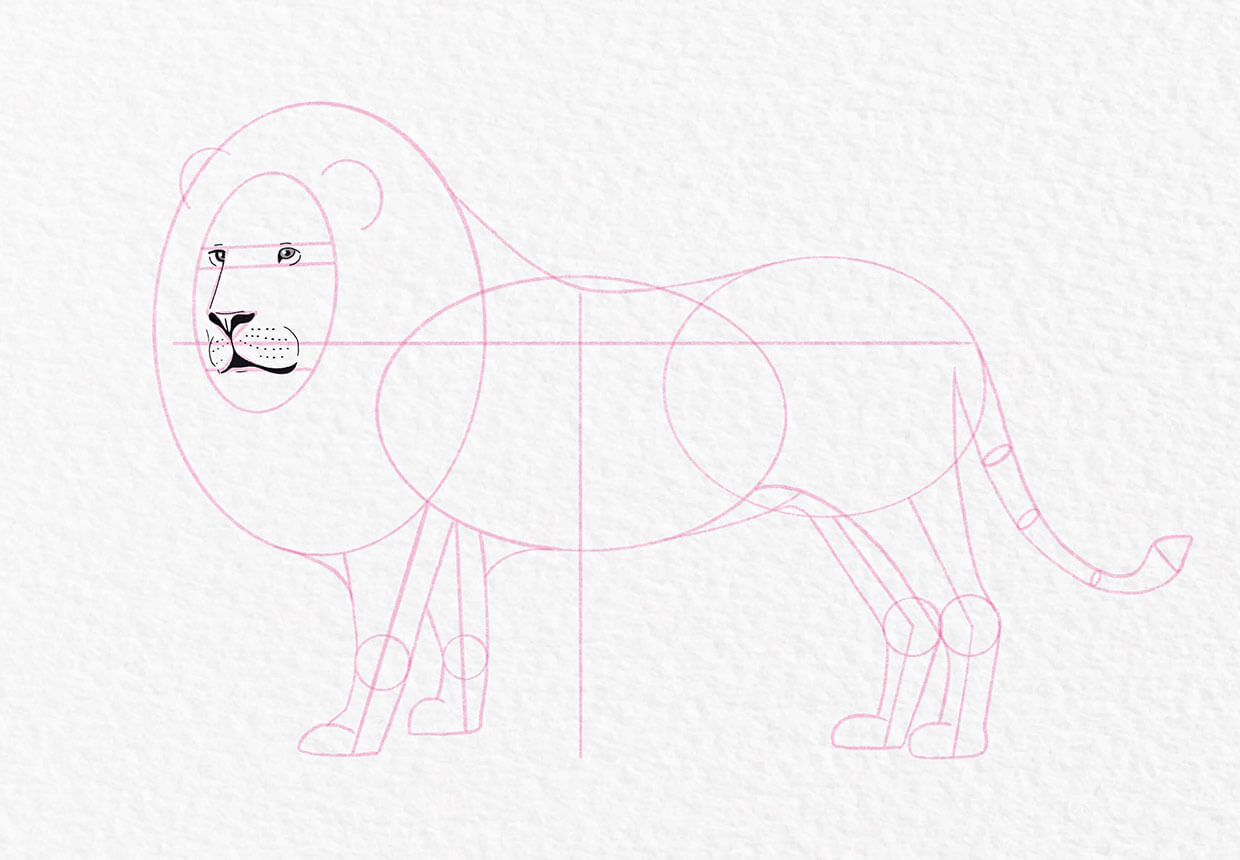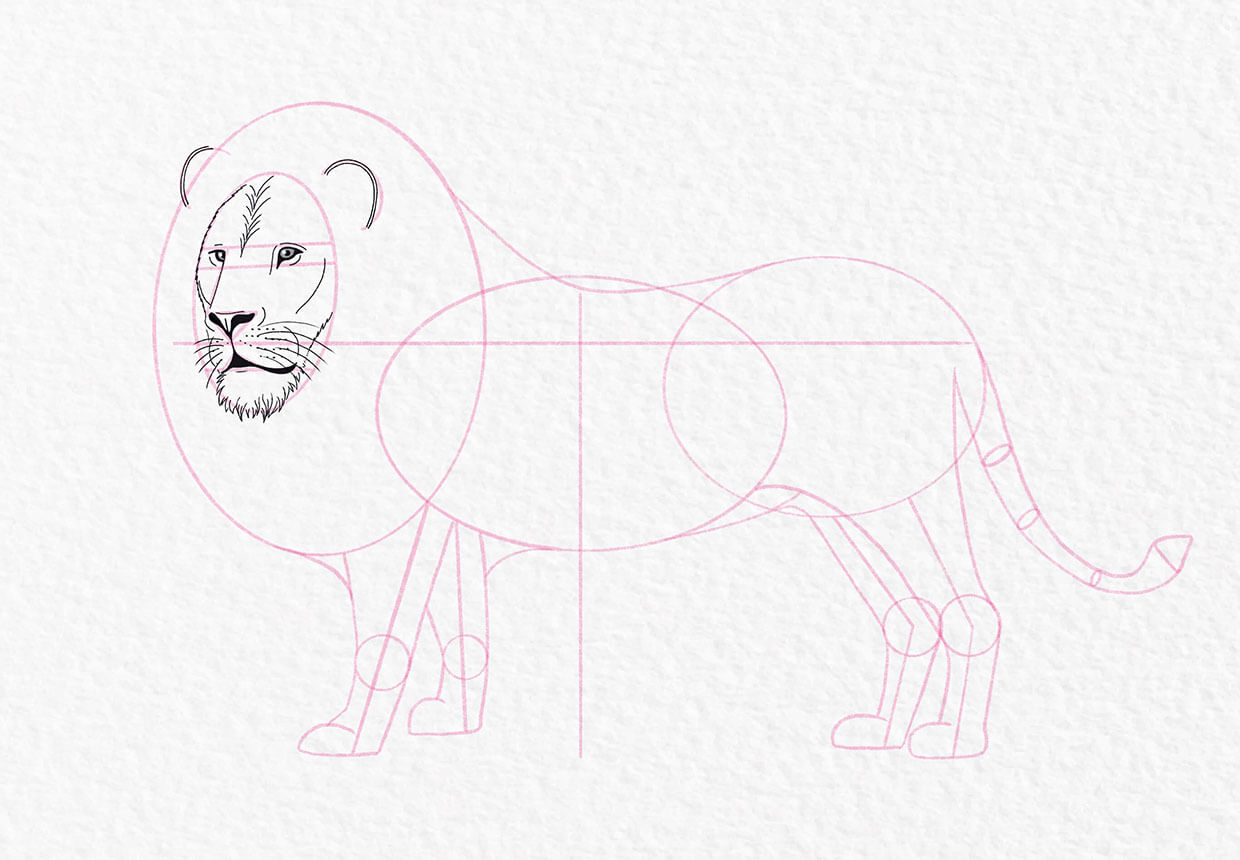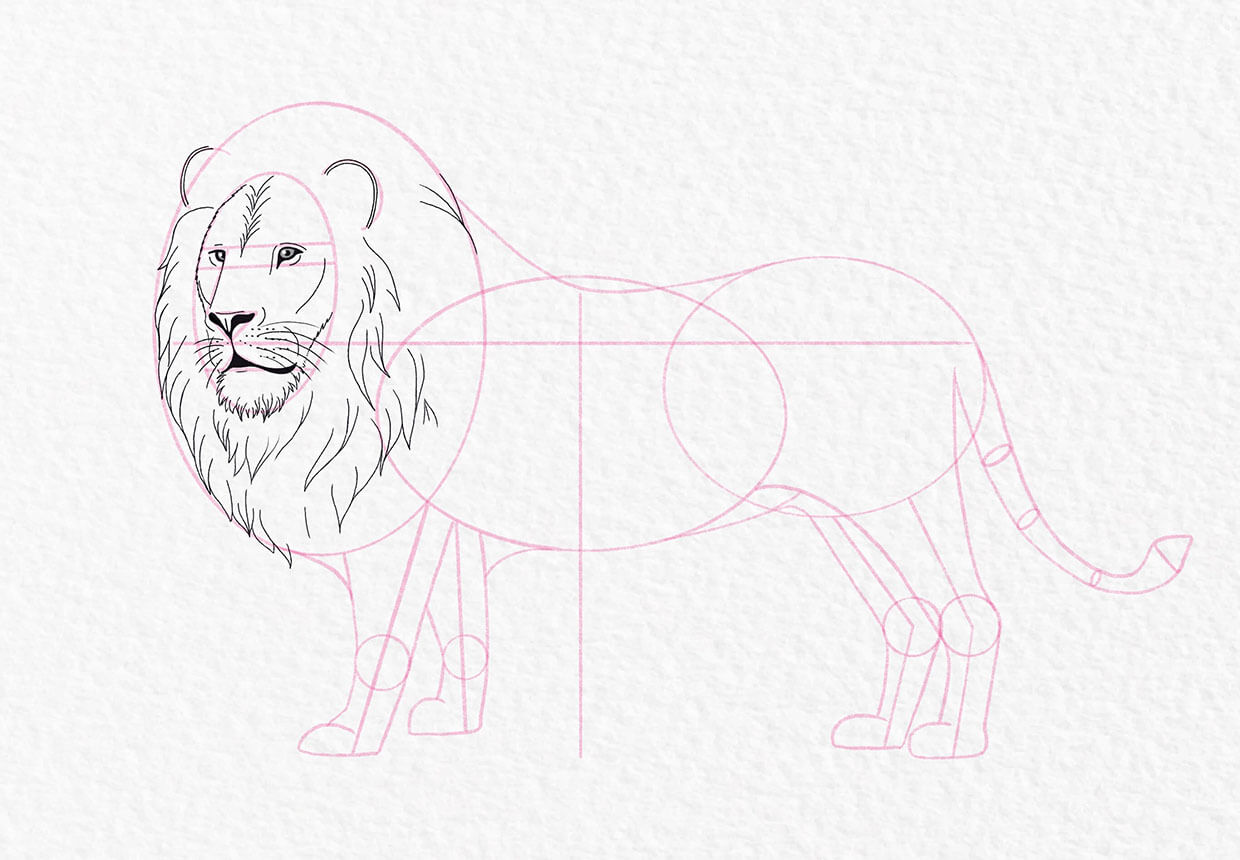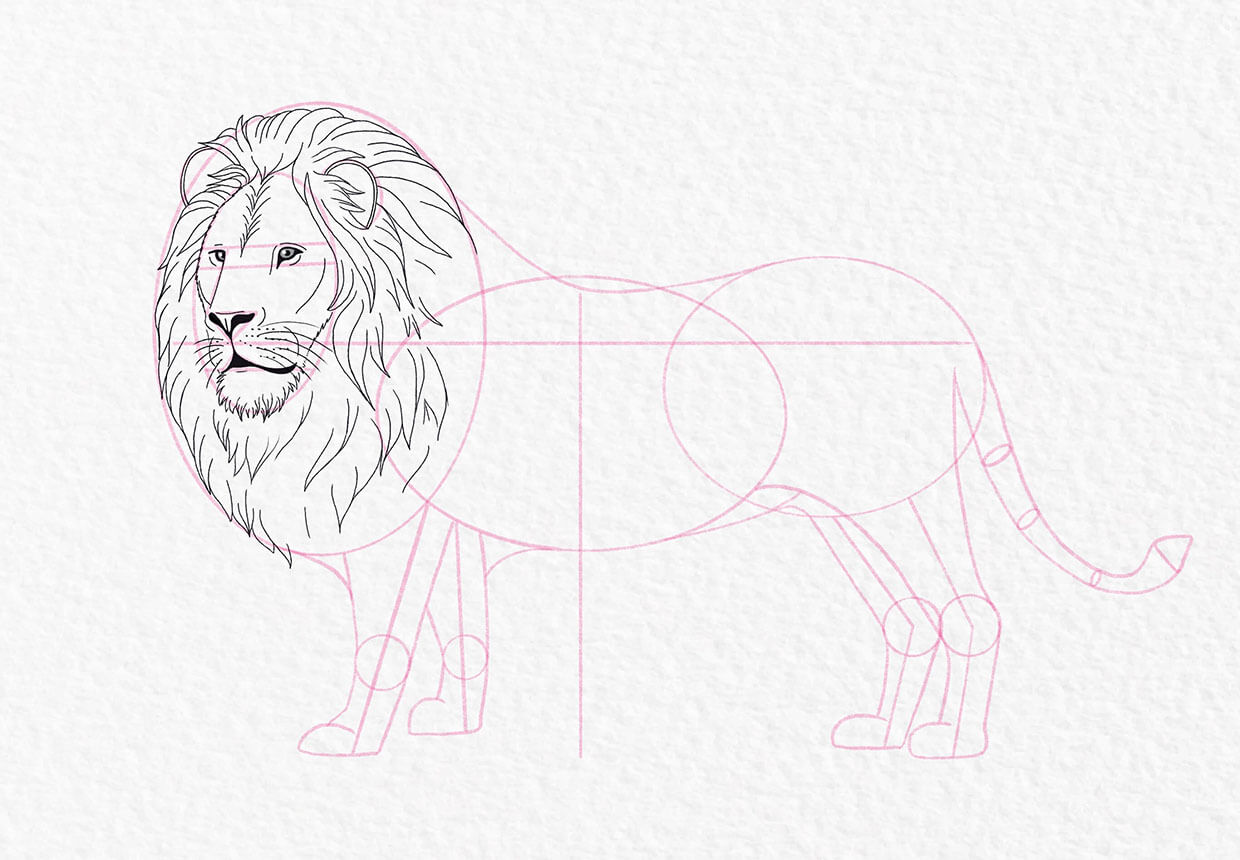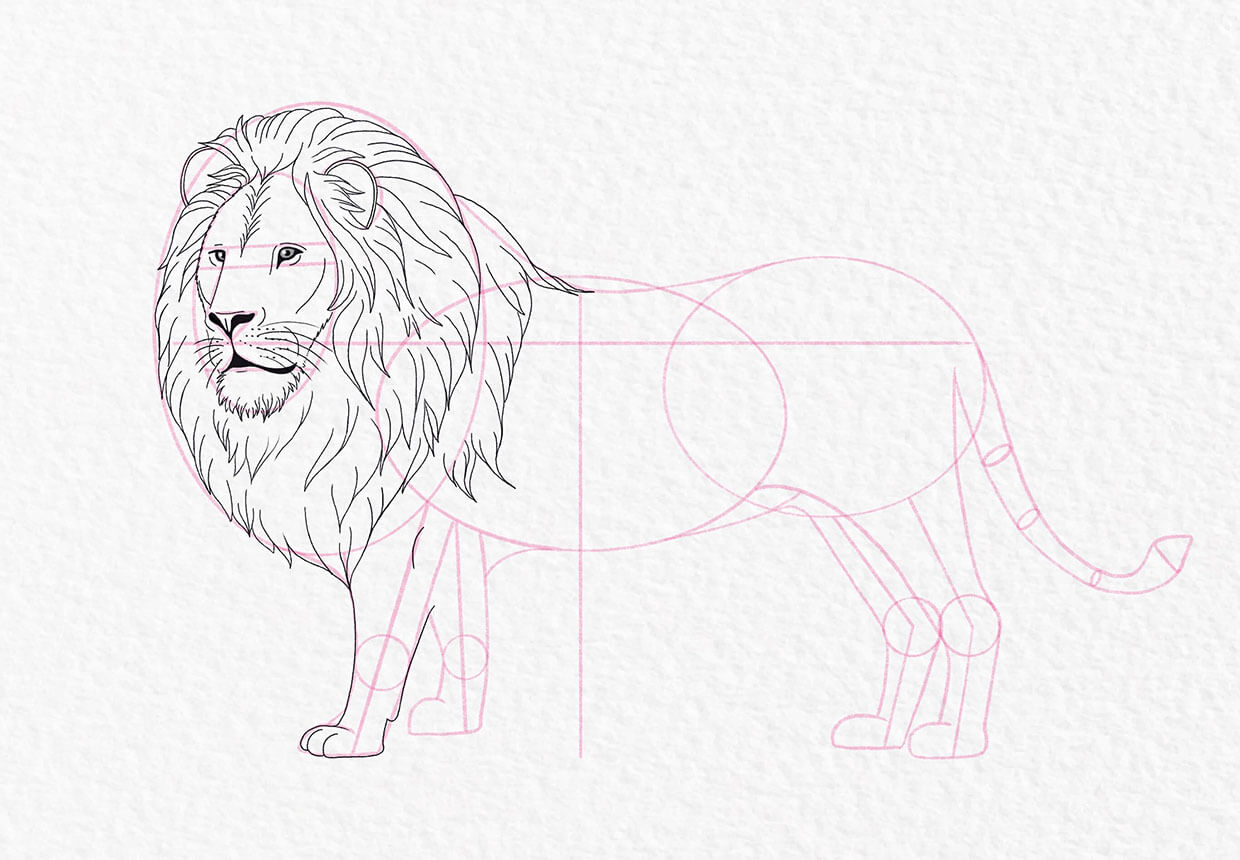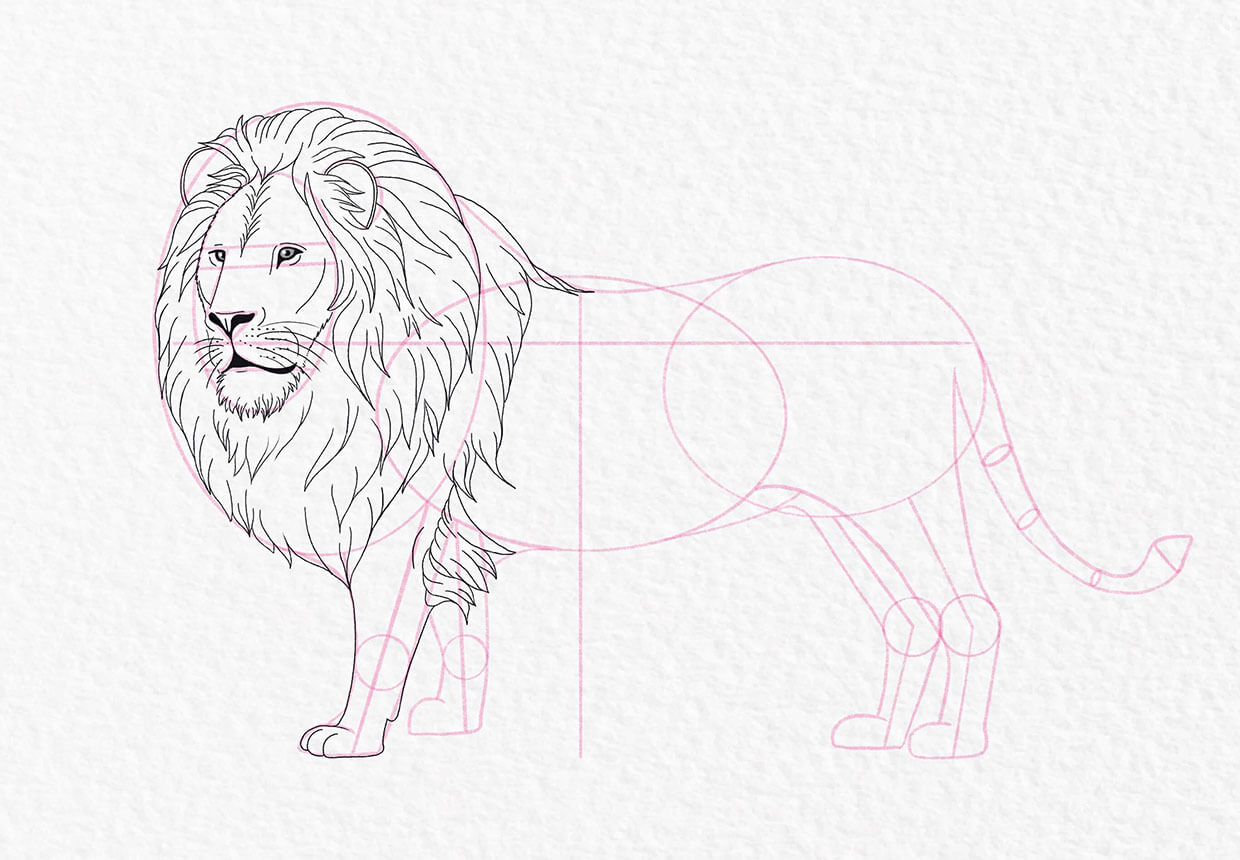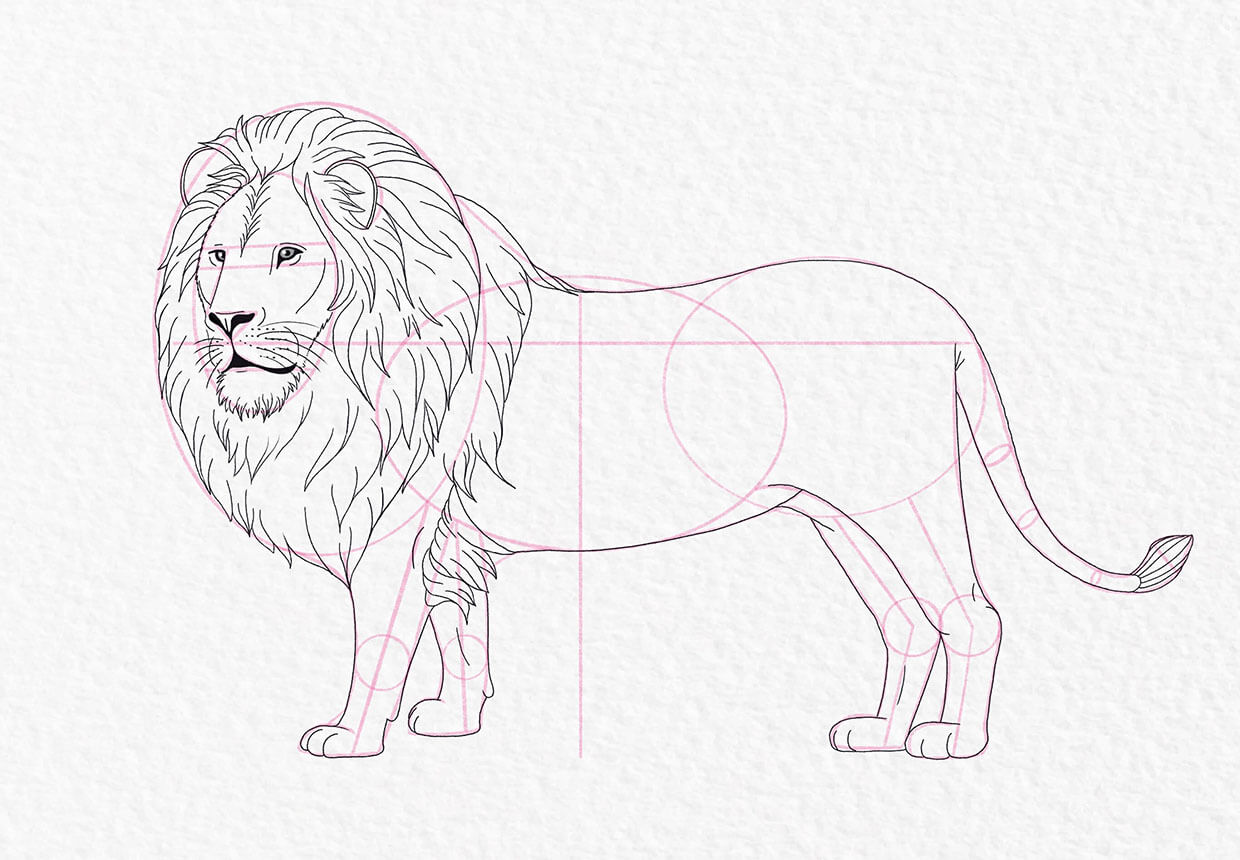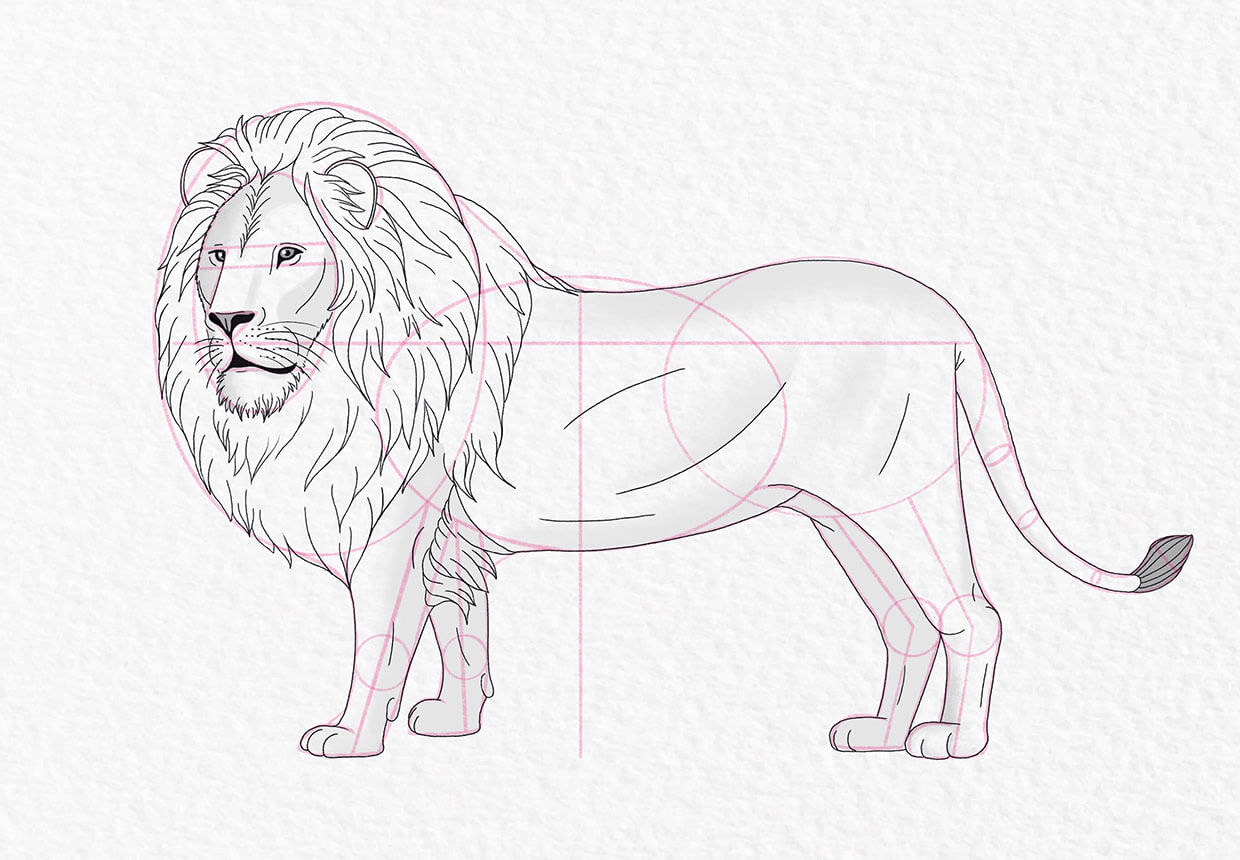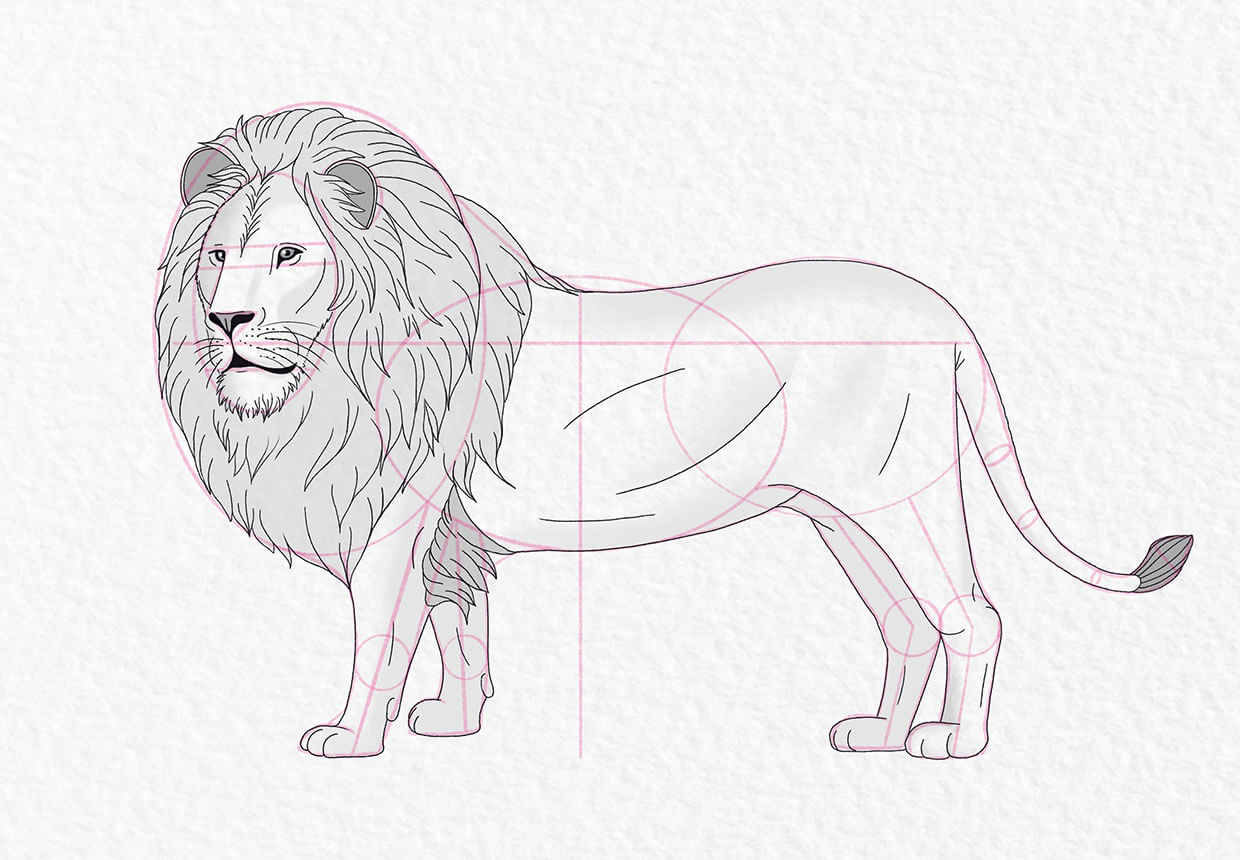Lions are impressive creatures that have fascinated humans for thousands of years. They’re powerful and majestic animals, so it’s not surprising that the lion is often referred to as the King of the Jungle.
In this tutorial, you will learn to draw your very own lion. Your male lion starts off life as a series of ovals, stacked around a vertical and horizontal line.
Once the construction lines are in place, you’ll learn how to use these as a guide to add the details. It’s important to get the proportions correct, so learning how to draw in this way will help you create other animals, too.
You can make him as detailed as you like, but you don’t need to add a lot of detail to make him look realistic. A few lines here and there are enough to emphasise the muscle and form of the lion.
For the purposes of this lion drawing tutorial, we’ve used red to show you where to sketch your construction lines, then lightened them when adding the detail on top.
Once you’ve drawn your lion, you can define the outline by going over it with a black fineliner pen, or use pencil shading techniques to introduce rich colours.
It's easy to learn how to draw a lion with our step-by-step tutorial, and although this project is aimed at the keen beginner, it’s a fun project for anyone at any level. Read on to get stuck in…
Top tips for drawing lions
1. Plan the composition
Start by building up the shape of your lion by using basic shapes, such as ovals and lines. Once these are in place, and you’re happy with proportions, you can go in and refine the details.
2. Study from real life if possible
Wildlife parks and reserves are the ideal place to study lions. Next time you head out, take a sketchbook, and spend a few minutes making some quick sketches from life. This will help you get a feel for the lion’s natural form and behaviour.
3. Photos are a good substitute
However, chances are you don’t have lions on your doorstep, so photos are the next best substitute for the real thing. If you’re starting out, try to choose a photo where the lion is standing straight-on to the camera. Avoid pictures with funny angles, as this can skew your perception of proportions.
4. Consider proportions
The mane of the lion makes up a considerable proportion of the lion itself. In the animal kingdom, it’s considered a sign of dominance and the mane will often extend along the lion’s belly. It’s a big feature of the lion, so be sure to dedicate enough time and detail to this mound of floof.
5. Male lions are larger than female lions
Keep this in mind if you’re creating a whole pride, but other than the iconic mane, you can apply the same techniques in this tutorial to draw a female lion.
6. Think about colour
We’ve gone for pencil shading in this tutorial, but you might like to colour your lion drawing using pencil crayons, markers, paint, or the colouring medium of your choice. In general, lions are a sandy yellow colour, but their manes can range in colour from nearly black to almost white. Typically, a lion’s mane will darken in colour as the lion gets older, so take this into account.
7. Use tracing paper
If you don’t want construction lines to appear on your final lion drawing, and don’t want the hassle of erasing them, use the tracing paper technique. Plan out your lion on one piece of paper, then overlay a second piece of paper (tracing paper) and draw your final lion on the overlay. Alternatively, you can use a lightbox.
This way, you’ve got a record of both your construction lines, and a finished drawing that looks professional and slick. You’ll also be able to use the same construction lines time and again, so you can refine and perfect your artwork without having to start afresh each time.
Flex your claws with our selection of art materials
Here’s what we recommend you’ll need for this lion drawing project…
Sketching pencils
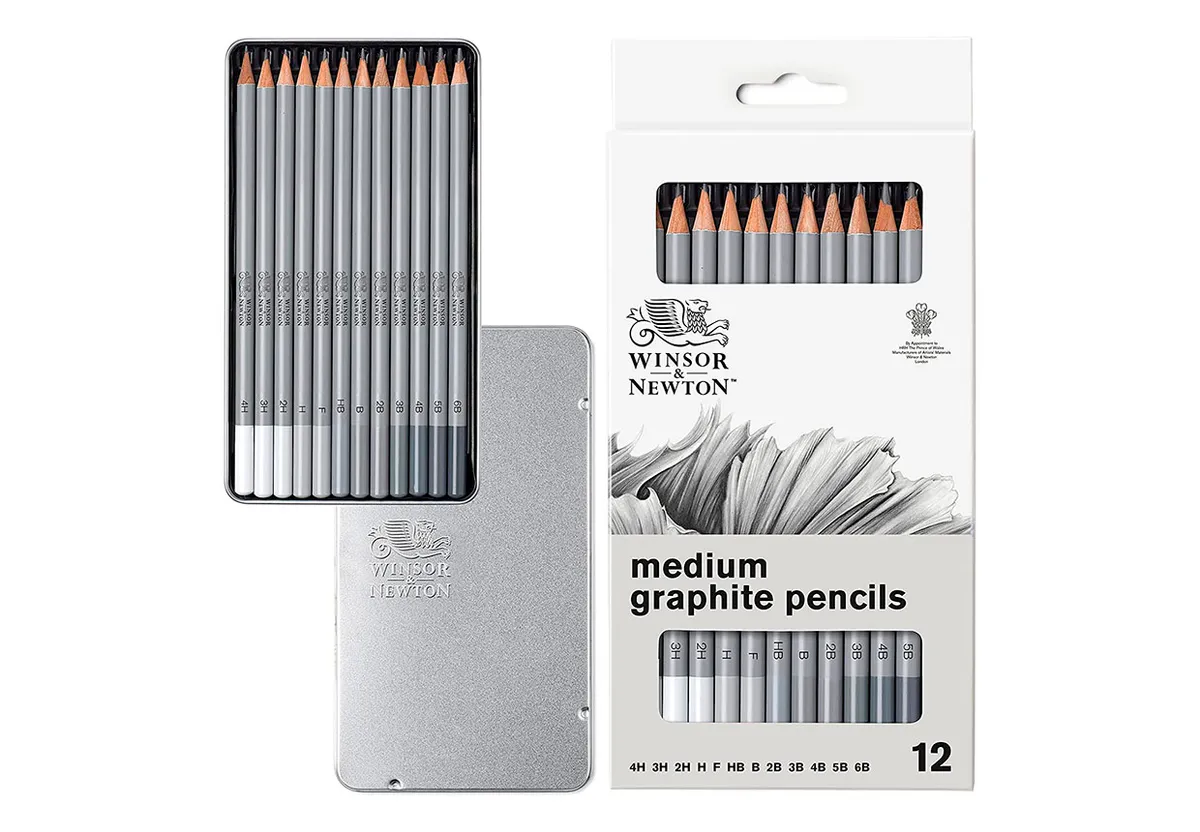
This collection of sketching pencils from Winsor & Newton has a good selection of hard and soft pencils.
The soft pencils (the Bs) are ideal for planning out your construction lines, while the hard pencils (the Hs) are ideal for adding fine details to your lion drawing, like the eyes. Meanwhile, the B or 2B is recommended for the main bulk of the sketch.
You could opt for a selection that has even more of the softer, or harder pencils – but this one is a great compromise as it sits right in the middle of the hardness scale, so you’ll get a lot of use out of it. And, this particular set is often on sale, too.
Fineliner set
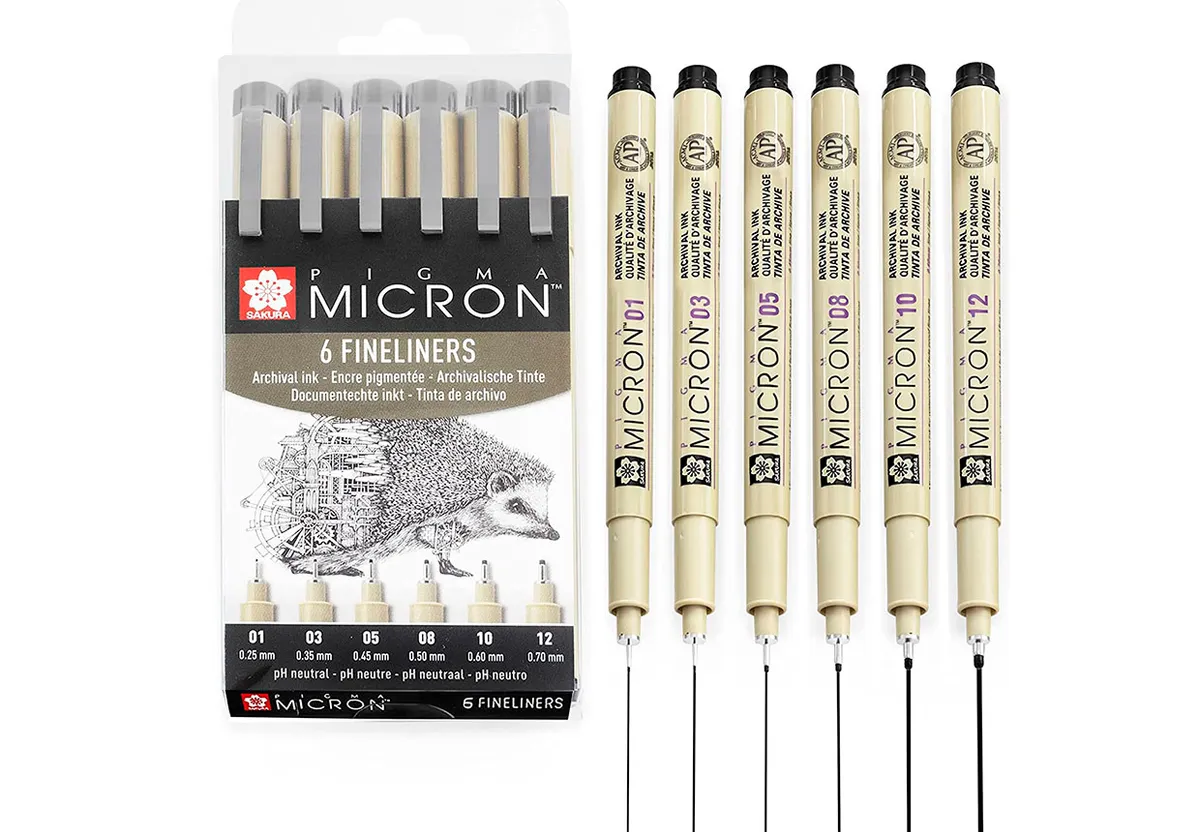
Working with fineliners is a great way for the beginner artist to gain confidence in drawing. They’re ideal for adding detail over the top of your construction lines, or for creating quick, messy on-the-go sketches.
Sometimes, removing a safety net (the ability to erase your drawing) is a great way to help you progress. These Micron fineliners are a designer favourite, and they use archival ink so your work won’t fade, or otherwise deteriorate, over time. Of course, you don’t have to use fineliners to add detail, you can use pencils or whatever medium you prefer.
Talens Art Creation Sketchbook

This sturdy, hardcover sketchbook will keep all your sketches organised in one place. It’s ideal for a range of materials, including pencil, ink, charcoal, pastel, acrylics, and gouache, and comes in different sizes to suit your needs.
This one is 21 x 29.7cm, so it’s ideal for practising techniques and keeping a record of what works and what doesn’t. It’s even lion coloured (ish)!
How to draw African animals
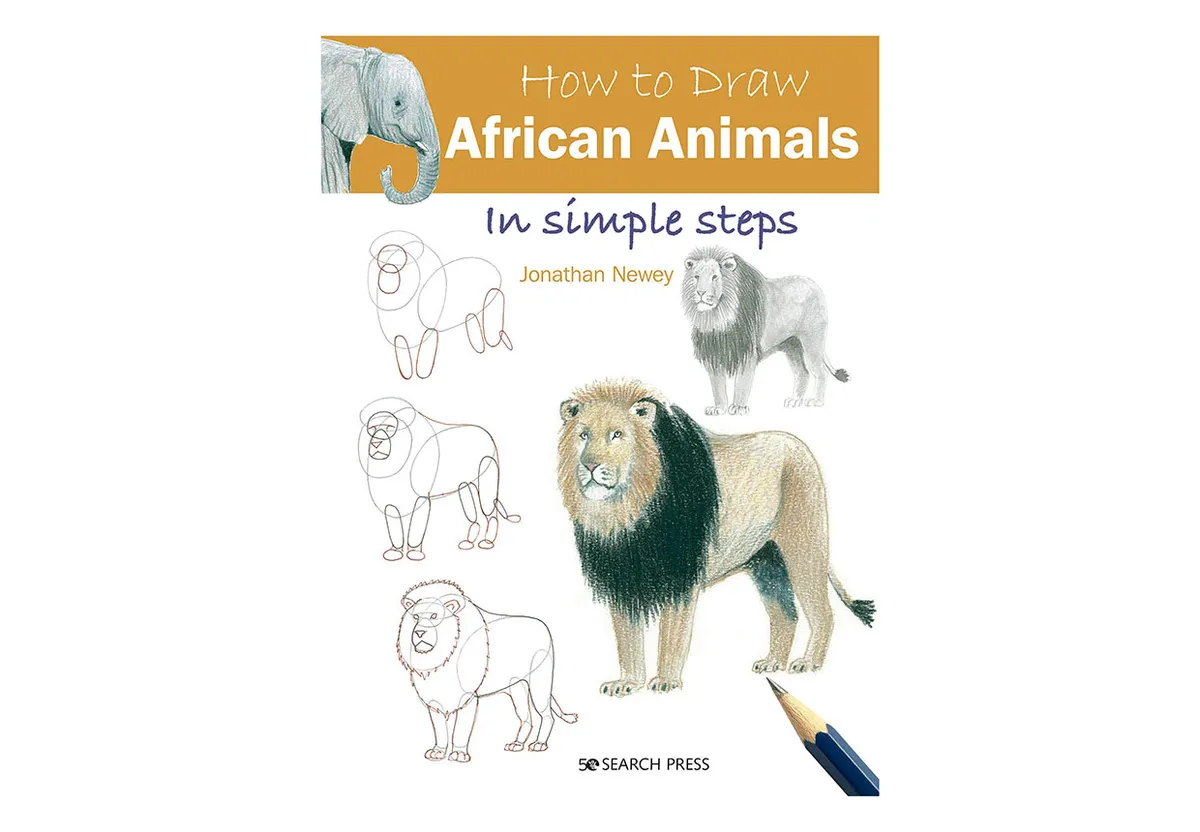
Get your fill of drawing tutorials with this project book by Jonathan Newey. This book, How to Draw African Animals, contains drawing tutorials for a selection of over 20 animals, including elephants, chimpanzees, zebra, meerkats, crocodiles, vultures, warthogs, giraffes, buffalo, flamingo and cheetah – among others.
Each project is split into simple steps, and it’s a fantastic book to practise drawing animals; your sketchbook will be full in no time!
Derwent shaped erasers
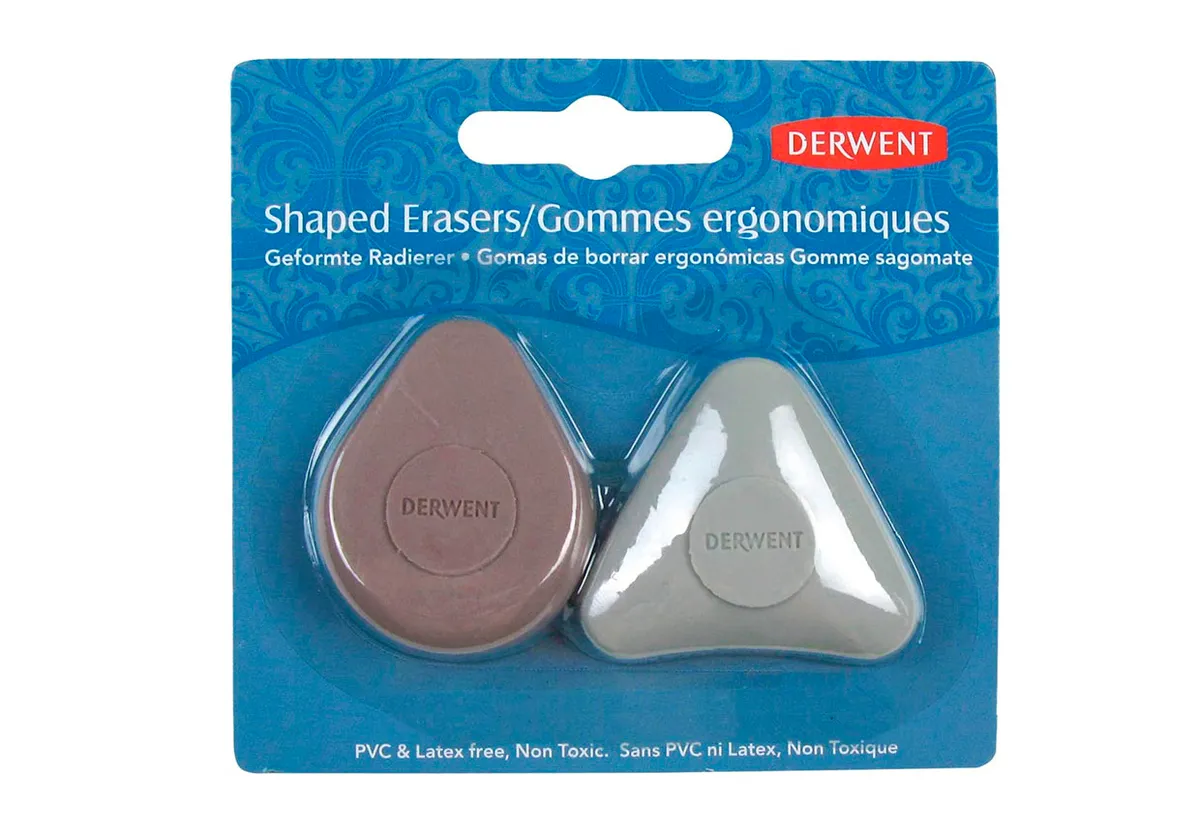
When erasing a large area (for example, lightening the construction lines to add detail), it’s a good idea to use a hard eraser. Opting for a hard eraser (over a kneadable one) ensures that it won’t be flip-flopping all over the place and working itself into a sausage on the page.
There are certain occasions where kneadable erasers are preferred, but for this tutorial I recommend something like these pointed erasers from Derwent. They’re long-lasting and smudge-resistant, so they’ll keep your artwork looking as neat as possible, and they’ve been designed for an ergonomic grip – so they’re comfy to hold.
